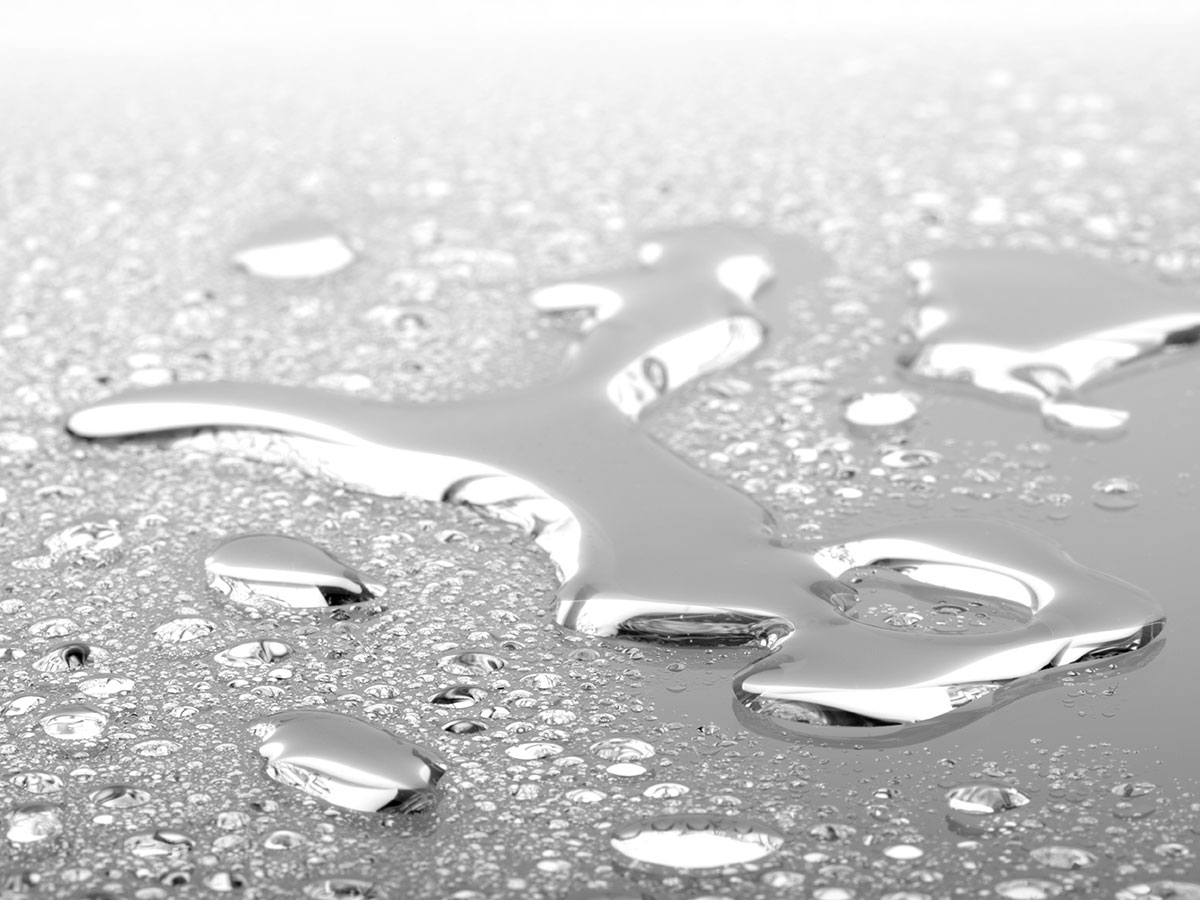Are you thinking of how to test mercury in water? Mercury in drinking water is among the most toxic pollutants, posing a threat to humans and animals. Natural processes, industrial processes, untreated waste dumped in water sources, and agricultural runoffs are some reasons your water may have mercury. Testing for mercury in water becomes paramount to ensuring your drinking water is safe. In this blog post, we look at how to test for mercury in water and the effects that mercury has on human and aquatic life.
Understanding Mercury
Mercury (Hg), also known as quicksilver, is a naturally occurring chemical element discharged into the environment due to human activity. It’s a heavy metal that is liquid at room temperature. Mercury comes in three forms: elemental, inorganic, and organic. Its solubility depends on the compound since they all vary.
According to the United States Geological Survey (USGS), atmospheric mercury released by human activities is the primary source of mercury in water sources. Due to its toxicity, testing your drinking water, especially from private wells, becomes crucial. It’s important to note that mercury in water is colorless and odorless and can be present in your water without you knowing.
How to Test for Mercury in Water
Testing your water for mercury is straightforward. So relax if you’ve been wondering how to test for mercury in water. According to the U.S. Environmental Protection Agency (EPA), the maximum contaminant level of mercury is 0.002 mg/L or 2 ppb. This figure will determine if your water has excess mercury than EPA’s standards. Here are steps to follow when testing your water for mercury.
Step #1: Get a Mercury Water Testing Kit
Buy a mercury water test kit from a local hardware store or online. Check the expiration date and read and understand the instructions.
Step #2: Collect the Water Sample
Use a clean container/glass to collect a water sample from your tap. Fill the container to the top and avoid anything contaminating your water.
Step #3: Perform the Test
Remove the test strip from its packaging and put it in the water, ensuring you follow the instructions carefully. Depending on the product you’re using, you will wait a few seconds or minutes before reading the results.
Step #4: Result Interpretation
The strip changes its color to show the level of mercury concentration in your water. Ensure the levels are below the EPA’s guidelines for safe levels of mercury. Test kits provide you with a color reference card with numerical values that you can use to compare with the color on the test strip.
If the results show high mercury levels, discontinue the use immediately and contact a professional testing laboratory or company. They have the equipment and expertise to test your water for contaminants accurately. In addition, they provide you with a comprehensive analysis and proper advice on addressing any issues regarding your water quality. Furthermore, you can contact your local health department for further advice.
If you’re a sound owner, you’re solely responsible for the water quality you drink. So ensure to test your water for mercury regularly or anytime you suspect the water is contaminated. For those in public water systems, you can request your water utility company for a report indicating mercury levels in your water. However, you can do the test at home for peace of mind.

Are Water Strip Tests Reliable?
Water strips are not always reliable. They don’t provide a clear picture of the results since you rely on colors to interpret the test results. However, test strips are the most commonly used for in-home water testing. Even though the test strips might not always be accurate, they will give you an idea of your water quality without spending too much. You can opt for professional testing after you have the initial findings. Note that your ability to follow the instructions during a water test can highly determine the accuracy of the water strip test.
Health Effects of Mercury on Water
EPA mandates that public water systems ensure mercury levels don’t exceed 0.002 mg/l. Levels higher than this can lead to severe health effects. While it’s rare for naturally occurring mercury to exceed EPA-safe levels, the same cannot be said about mercury caused by human activities. Once mercury is in aquatic ecosystems, microorganisms convert it to methylmercury (MeHg). Methylmercury may bioaccumulate in fish and other marine organisms. Eating fish with higher mercury levels harms humans, especially unborn babies and young children.
Short vs. Long-Term Exposure
Short-term exposures to high levels of mercury can lead to mercury poisoning, causing symptoms such as:
- Nausea
- Vomiting
- Diarrhea
- Abdominal cramping and pain
- Respiratory distress
The after-effects depend on a person’s immunity response. On the other hand, long-term exposure to mercury in water, even at low levels, can lead to serious health effects such as:
- Kidney damage
- Liver damage
- Neurological and developmental problems, especially in fetuses and infants.
- Increased risk of cardiovascular disease
Some populations, such as fetuses, infants, and young children, are more prone to the harmful effects of mercury. They are especially susceptible to mercury poisoning because their nervous systems and brains are still developing. You should therefore test your drinking water for mercury if a pregnant woman or young child is in your home. Furthermore, those who consume large amounts of fish or other seafood contaminated with mercury may also be affected. Following your state’s fish consumption advisory information can help you reduce eating fish with mercury.

Effects on Aquatic Ecosystems
Mercury in water can also have environmental effects, especially on aquatic ecosystems, by reducing the diversity and abundance of marine life. It can interfere with the reproduction and growth of aquatic animals, leading to deformities, impaired swimming, and feeding behaviors.
Mercury in water also leads to biomagnification in aquatic ecosystems. As mercury builds up in an organism’s tissues, it becomes more concentrated as it moves up the food chain. For example, tiny marine organisms consume mercury-contaminated sediment or water. Then, larger fish eat the smaller organisms, accumulating mercury in their tissues. This continues up the food chain, leading to high levels of mercury, even in birds that eat fish, like eagles.
What Can We Do to Reduce Mercury in Water?
There’s no way to reduce naturally occurring mercury in water. On the other hand, it’s possible to reduce mercury that comes from human activities. One way is for relevant bodies to implement and enforce laws and regulations that will limit industrial waste in water sources. This can be achieved by improving waste facilities. There should also be regulations for industries to adhere to when they involve mercury.
People should also limit their use of mercury products since they will end up in landfills after use. This can lead to soil contamination, which affects plants, and leaking to water resources.

How Do You Remove Mercury From Water?
After knowing how to test for mercury in water, it’s equally important to understand how to remove it from your drinking water. According to the University of Wisconsin–Eau Claire (UWEC), you can remove mercury from water using these four methods:
- Granular Activated Carbon (GAC): Due to the granular activated carbon adsorption properties, it becomes an effective process for removing mercury from water. Adsorption occurs when contaminants such as mercury ions in the water are attracted to the surface of the activated carbon and stick to it. The activated carbon acts as a sponge, trapping mercury ions and removing them from the water. For excellent results, you can combine GAC with other filtration methods, such as reverse osmosis (RO).
- Lime Softening: Lime softening involves adding lime (calcium hydroxide) to the water, raising its pH levels. This causes the mercury ions to react with the hydroxide ions, causing them to precipitate out as mercury hydroxide.
- Reverse Osmosis: RO is one of the best methods to remove heavy metals from water, including mercury. Water is forced through a semipermeable membrane under high pressure. The clean water is collected on one side of the membrane, leaving contaminants on the other.
- Coagulation/Filtration: Coagulation involves adding chemicals such as aluminum sulfate or alum to the water to destabilize mercury and clump it together. This creates larger particles, which can be easily removed through filtration.
Note that the effectiveness of the above methods will highly depend on the mercury concentration. Combining different ways will give you better results than using a single option.
If you’re looking for a filtration system that will give you clean water from all your water taps, the whole home water filtration system is a good choice. It combines different filtration methods, ensuring 99.9% of contaminants removal.

Need Clean Water? ONIT Has a Solution for You!
Are you worried about how to test for mercury in water? Testing mercury at home is an easy process. Ensure to follow the instructions keenly for accurate results. ONIT Home can help reduce the hassle of testing your water. We provide free water testing and also interpret the results for you. The good news is that we will do the tests at your house. We can also design a unique system that fits your water needs.
Get a free quote today or call us at 1-833-433-0331 to speak to us. Our experts are ready to help you design a water treatment system to keep your family, animals, and plants healthy. For all your water solutions, we’re ONIT!



